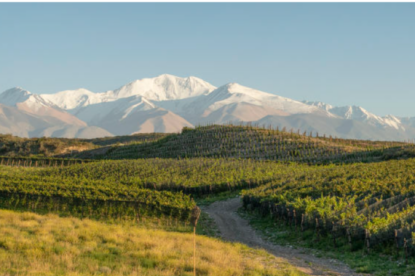Wine regions associated with vineyards known to produce great wines have long been regarded as the finest in the world, a precedent set in European wine countries long ago.
In the Lodi AVA, the top vineyard-designate wines are primarily associated with old vine plantings – a distinction organizations like Historic Vineyard Society identify as plantings in which most of the vines are at least 50 years old.
In Lodi, old vines are a peculiarity. In fact, there are more plantings over 50 years old than in any other region in the United States. One reason being varieties like Zinfandel and Carignan (among the most widely planted of Lodi’s old vines) favor the region’s Mediterranean climate and sandy soils. Another reason being care of Lodi’s generational farming families who have long known the best wines come from the oldest vines.
Here, our list of top vineyard-designate bottlings from some of Lodi’s best known old vine plantings:
Bechthold Vineyard Cinsaut, planted 1886

Originally planted by Joseph Spenker as “Black Malvoisie” in 1886, this 25-acre own-rooted, vertical cordon-trained Cinsaut block is farmed organically by the Phillips family of Michael David Winery. Red and Provençal-style rosé wines are produced by Michael David Winery, Turley Wine Cellars, Bonny Doon Vineyard, Onesta Wines, Markus Wine Co., Jessie’s Grove Winery, Estate Crush, The Scholium Project, Two Shepherds, and BIRICHINO, among others.
Kirschenmann Vineyard Zinfandel, planted 1915

This 19-acre block of own-rooted, head-trained Zinfandel was planted in 1915 and farmed by Alan Kirschenmann until his death in 2004. In 2012, it was purchased by Tegan Passalacqua of Turley Wine Cellars and Sandlands. Deep loamy sand streaked with limestone and silica creates distinctive wines with multifaceted fruit qualities from Turley Wine Cellars, Tizona by Bokisch Vineyards, Bedrock Wine Co., Precedent Wine, and Passalacqua’s own Sandlands Wines label, among others.
So, what do you really know about Lodi old vines?
Test your knowledge with this quick quiz!
Mule Plane Vineyard Carignan, planted 1927

Named for the original mule-and-plow farming method, Mule Plane is a 5-acre block of own-rooted Carignan planted between 1927 and 1930 by the Shinn family who still owns and manages it today. The large, vertical cordon-trained vines (most reaching 6 feet) are historically high yielding, averaging more than 7 tons to the acre. The grapes go into vineyard-designate Carignan wines by m2 Wines, Precedent Wine, Holman Cellars, and Leaf and Vine, among others.
Rauser Vineyard Carignan, planted 1909

Located across the road from Kirschenmann Vineyard, Rauser consists of mostly own-rooted Carignan planted in 1909, with a mix of equally old Alicante Bouschet and Zinfandel interplanted with recent Carignan replants. The vineyard is owned by Jeannie Rauser and managed by the Felten family of Klinker Brick Winery who produces a medium-bodied Carignan as well as a dry rosé from fruit picked earlier in the season.
Rous Vineyard Zinfandel, planted in 1909

Planted in 1909 on St. George rootstock in deeper, sandier variations of Tokay sandy loam, this 10-acre block is owned and farmed by Craig Rous, former director of Lodi’s Kautz family’s Bear Creek Winery and Woodbridge by Robert Mondavi. The vineyard produces uniquely flowery styles of Zinfandel with herby nuances and full, rounded structures under the Ironstone Vineyards, Macchia Wines, and McCay Cellars labels.
Enjoy a rare taste of some of Lodi’s most venerated vineyards
in this 6-bottle wine package. Quantities are limited.
Royal Tee Vineyard Zinfandel, planted 1889

Planted in 1889 by Joseph Spenker and farmed by descendant Greg Burns of Jessie’s Grove Winery, this 5-acre block is Lodi’s oldest Zinfandel planting as well as its oldest surviving example of the classic, California-style “field mix” of 84% Zinfandel with a balance of Carignan, Mission, Flame Tokay, and Black Prince (Rose of Peru). Jessie’s Grove produces separate bottlings of Zinfandel, Carignan, and Tokay from Royal Tee. Since 2015, Greg La Follette of Marchelle Wines has been producing field-mix style Zinfandel wines from the vineyard.
Scottsdale Vineyard Zinfandel, planted early 1900s

Scottsdale Vineyard is a 2.5-acre, own-rooted, head-trained Zinfandel block whose oldest vines date back to sometime in the early 1900s. Younger vines were planted in the 1960s. For the past 15 years, it has been farmed by Harney Lane Winery who produces a vineyard-designate bottling. Ultra-sandy soils yield small clusters which give way to floral, blue, and red berry-scented qualities in the wine.
Stampede Vineyard Zinfandel, planted 1920s

Adjacent to the Clements Buckaroos Rodeo Grounds, Stampede was planted in the 1920s and 1940s in an unusual diamond-shaped pattern with 9- to 10-foot by 10-foot spacing. The 22-acre block consists of primarily head-trained, own-rooted Zinfandel with smatterings of Mission and Mourvèdre. Distinct, single-vineyard Zinfandel wines are produced by Fields Family Wines, Maître de Chai, and Haarmeyer Wine Cellars, among others.
Adapted with permission from “ Old vine plantings going into Lodi’s best-known vineyard-designate wines,” by Randy Caparoso, Lodi Winegrape Commission, November 20, 2020.

Last Updated: May 8, 2023













